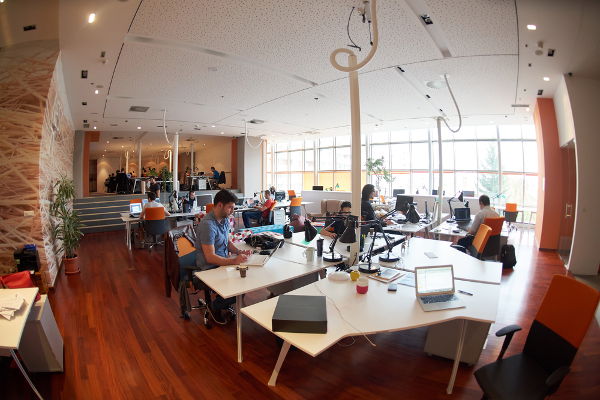When you are an HR executive, you are expected to don many hats. One of the biggest challenges is keeping your company out of legal battles and knowing the role of human factors in production network. This calls for tact and inter-personal skills to smooth out “people problems”. Having a disgruntled employee is not something unusual or threatening. What is worrisome is when the unsatisfied employee continues to hold onto his grudge despite your best efforts at reconciliation.
My Good Practices
Evaluation
A knee-jerk reaction is what you must avoid when dealing with a disgruntled worker in the workplace. You know that action is needed but before you take it, you need to carefully assess the situation. A clear perception helps you take the right decision as you are able to evaluate objectively. You could try to study the behavior of this employee in different situations. This will help you identify behavioral traits that may be making him incite a situation. You can also get a better understanding of the problem by observing his colleagues’ reactions to his behavior. It may help to focus on a couple of incidents in the past which his co-workers may have complained about.
Also read: Why your employees are unhappy and what to do about it
Observation
This practice will help you respond to a crisis situation rationally. Instead of jumping to conclusions right away or responding to grievances immediately, you can take time to review the situation. A good way is to communicate with those who are involved and gather all the relevant facts. You need to keep in mind that every worker is entitled to his bad days. So, when an otherwise diligent and cooperative employee suddenly starts to behave irrationally, there is usually some other reason for it.
Development of a Plan
When you have carefully reviewed the situation at hand, you can decide on the appropriate course of action. So, you can choose from coaching, training, counseling or discipline depending on what the situation warrants. Counseling mainly deals with problematic behavior. The employee may be advised to enroll in a performance program which is when coaching is introduced. Training helps to enhance the employee’s skills and discipline will recommend immediate improvement program. Whatever the plan of action, the HR team needs to be a part of it.
Confront the Problem
An important tip to remember is not to push the problem away. Dealing with an unsatisfied employee may not be a pleasant or an easy task. But, at the same time, this is part of a manager’s job. Such problems rarely resolve themselves; if disregarded, they will only worsen. When you have decided to confront the issue, your task is to execute it, knowing that your entire team will be watching you.
Focus on Behavioral Aspects Not Person
Since your objective is to find a solution, you should focus on the wrong behavior and not the individual. You must give the employee benefit of the doubt; you need to believe it was not his intention to cause harm. More often than not, personal problems, unexplained fatigue, sleep deprivation, mood swings, confusion or fear may be the cause for such unreasonable behavior. Any HR professional who has an eye for noticing behavioral aspects of a person can easily help his company not only in employee retention but also with employees which are more productive.
Find Behavioral Reasons
Your job is to try and find out what circumstances could have forced an employee to behavior in an unacceptable manner. You need to listen to him properly as he speaks, staying composed and open-minded. The best way to understand his behavior is to ask him open-ended questions. You must remember not to interrupt his speech. You can summarize his thoughts for him once he has finished speaking, to check if he agrees to what you have understood.
Also read: 3 Key Steps To Implement A Feedback Habit In Your Workplace
Find Solutions Together Over Coffee
When you can resolve a situation by working hand in hand with the employee in question, you know the outcome will be positive. Without his involvement in this exercise, the disgruntlement is not likely to go away. This is even more helpful in companies were employees come from diverse cultures. Bringing diversified people together and managing them can result in fabulous ideas and jelling up differences. Both parties must agree on the solution for it to work. Only then will the worker understand why his behavior had been inappropriate and how he should have behaved.
Follow up
When there are less severe issues that can be handled through simple conversations, you should deal with those promptly. However, there may be serious concerns which demand greater involvement on part of the HR personnel for a reasonable solution to come up. The trick is to have patience and not expect immediate results. The best way to deal with the situation in that case is to strive for continuous betterment and not instant success.
Although you may follow these useful practices for resolving workplace problems, there are times when you may fail to tackle a crisis involving an unsatisfied employee. There may be deep-rooted psychological problems affecting the concerned worker which demands professional help.
Download our eBook on Learning and Development Trends and find out how technology enables continuous learning in organizations.
About the author:

Image licensed from Depositphotos.com








Global Assignment Expert provides the best Online Dissertation Help in Malaysia. Our Best PhD expert writers help you to write excellent and 100% plagiarism-free assignments and get A+ grades in your Assignments. Global Assignment Help you in writing plagiarism-free assignments at very reasonable prices. our expert writers take care of all your assignment-related queries.